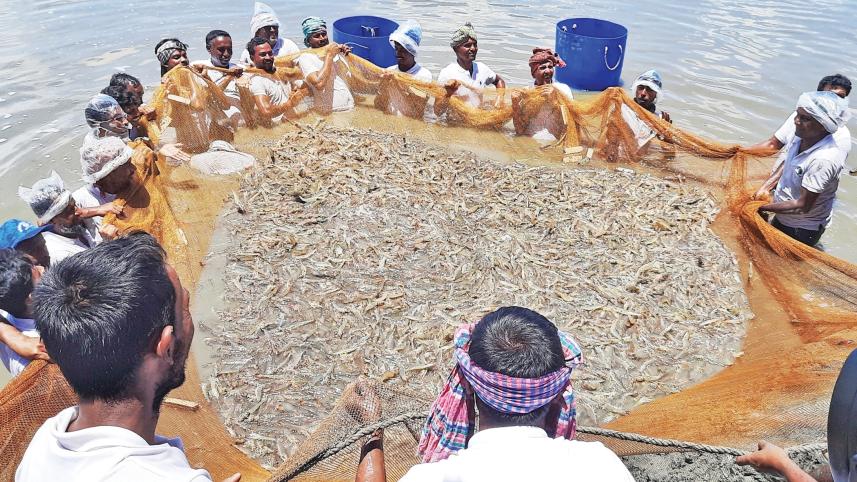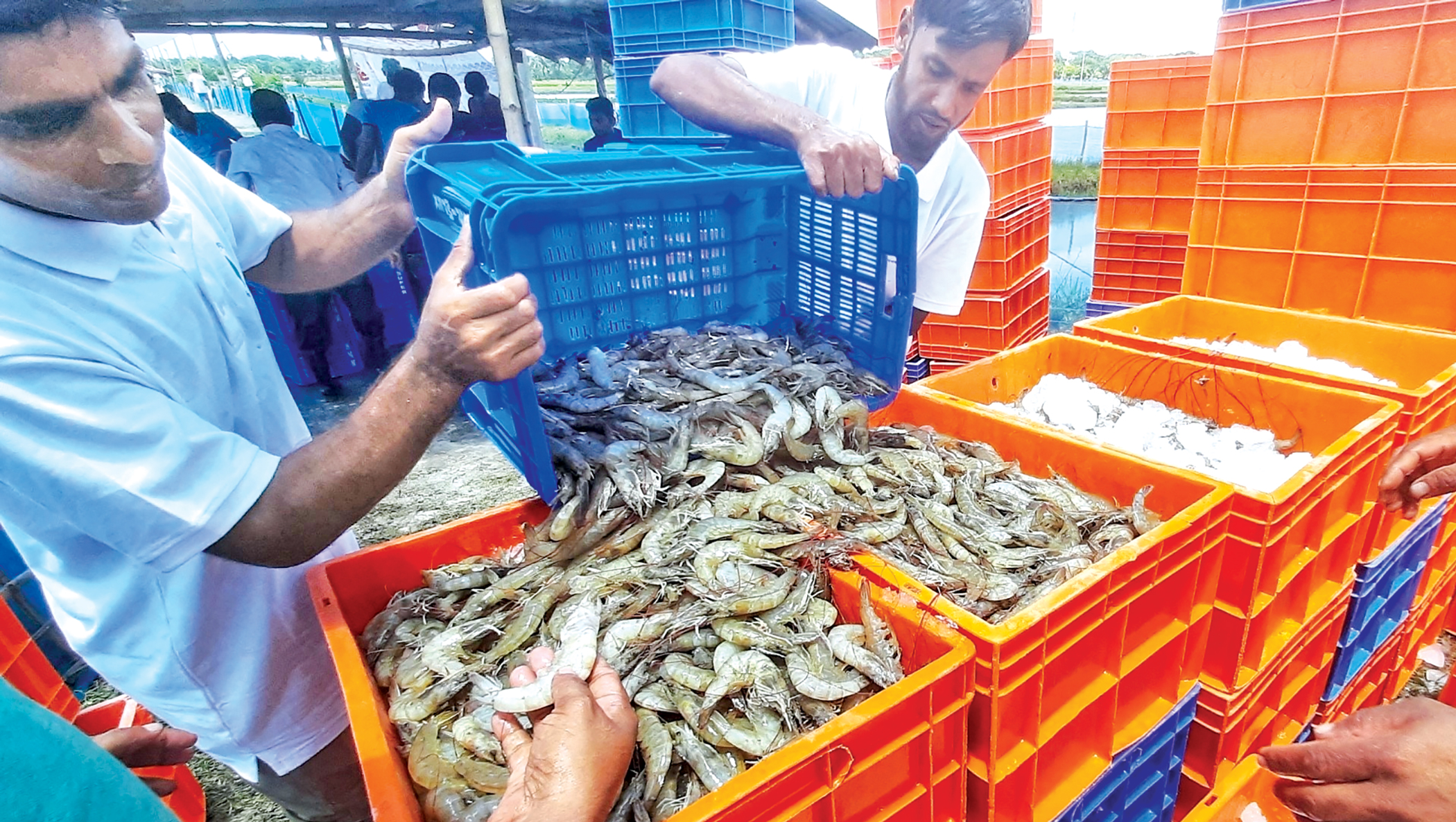Govt prepares guideline on non-native shrimp farming

The government has formulated a guideline for the commercial cultivation of non-native vannamei shrimp in a bid to increase export earnings from the sector, strengthen its presence in international markets and improve domestic supply.
The Ministry of Fisheries and Livestock yesterday approved the guidelines, which were prepared and scrutinised by a dedicated committee featuring aquaculture experts.
Considering the growth in domestic shrimp production alongside the sector's export potential, an initiative for the experimental cultivation of vannamei shrimp, also known as white-leg shrimp, was taken up back in 2018.
The project yielded satisfactory results upon its successful completion, according to a document on the new guidelines.
Commercial cultivation of white-leg shrimp will initially be allowed only in coastal areas as well as farms that have the required infrastructure, including biosecurity and quarantine facilities.
White-leg shrimp cannot be cultivated by traditional means for the sake of ensuring biosafety. This means that unauthorised antibiotics, chemicals or pesticides cannot be used, the ministry said.
Before marketing any vannemei raised at a farm, the producer should inform the concerned officer of the Fisheries Department, who will then check the health of the shrimp some 8 to 10 days before harvesting.
Also, the shrimp heads must be intact while flour, tapioca and other impurities cannot be used for increasing their weight, it added.
And until the construction of a government quarantine station, importers and other concerned organisations will need their own quarantine facilities.
This is because imported brood vannemei shrimp needs to be tested for disease in an approved laboratory before being farmed.
"The guideline was prepared so that farmers can cultivate vannamei shrimp in the right way without facing any complications," said KH Mahbubul Haque, director general of the Department of Fisheries.
Frozen food exporters who had been pursuing the government to allow the cultivation of non-native shrimp in the face of falling export earnings for over a decade welcomed the new guideline.

Shyamal Das, managing director of MU Sea Food Limited, said India started commercial farming of white-leg shrimp many years ago while Bangladesh has just begun.
"Now, we have to work on moving forward in the international market," he added.
The Department of Fisheries had been unwilling to grant permission for cultivating non-native shrimp in fear of negative impacts on biodiversity and the environment.
Introduced in the US in the 1970s, commercial cultivation of white-leg shrimp started to expand in the 1980s, reaching many Asian countries such as China, Thailand, Indonesia and India.
As such, production of the shrimp soared, making huge strides in the global market.

 For all latest news, follow The Daily Star's Google News channel.
For all latest news, follow The Daily Star's Google News channel.